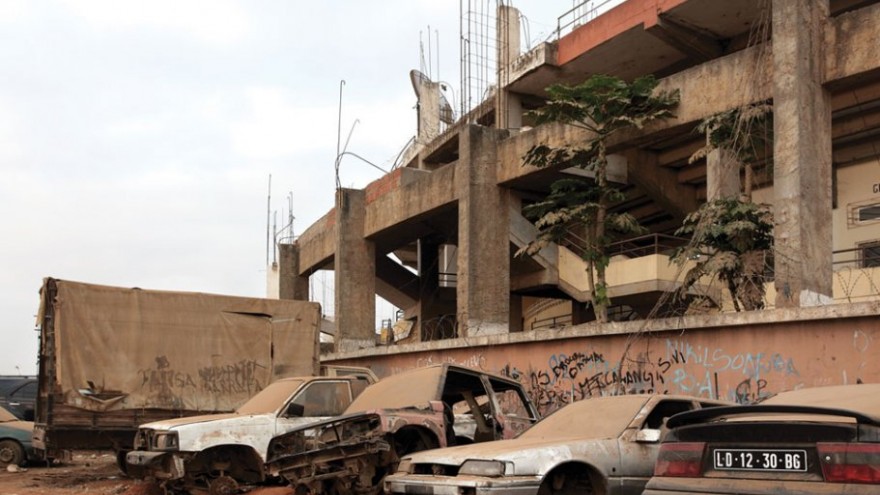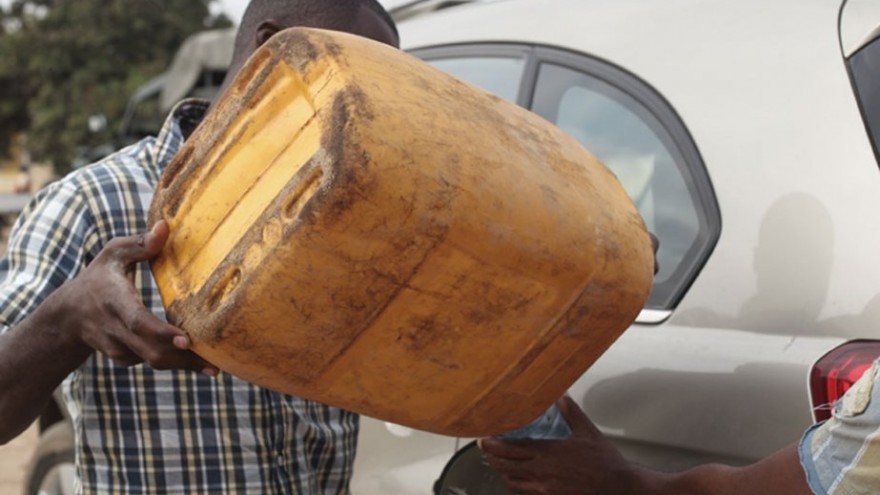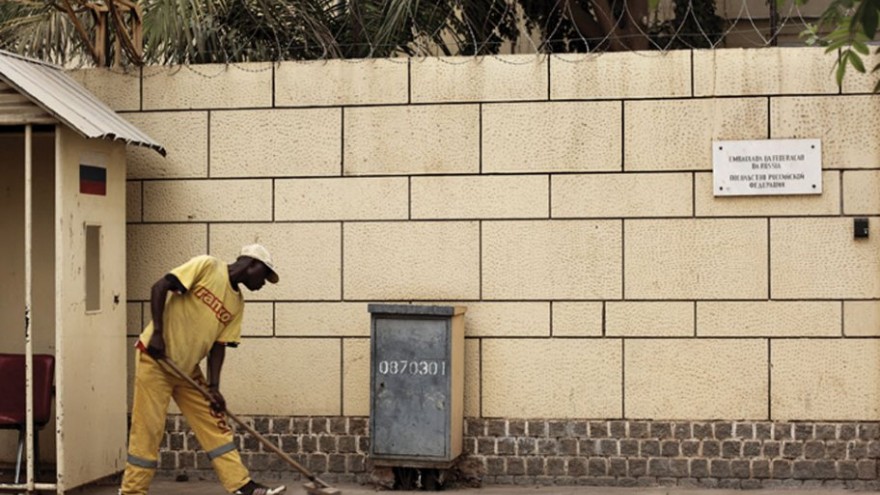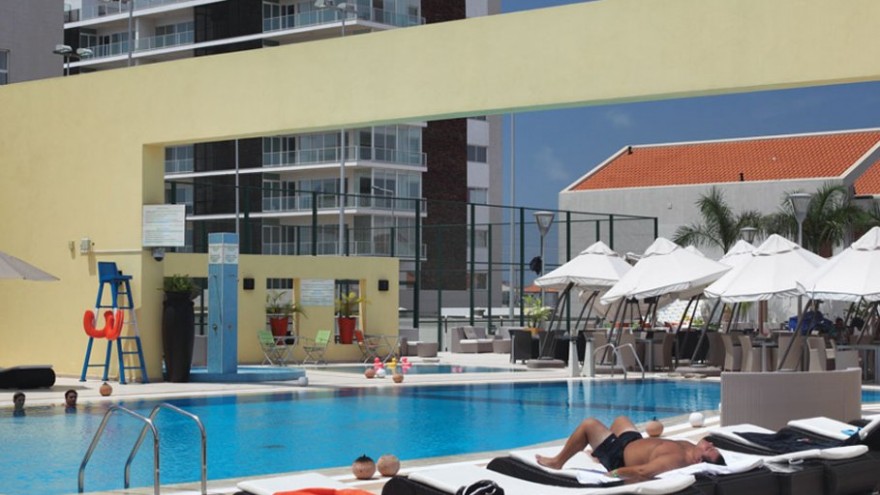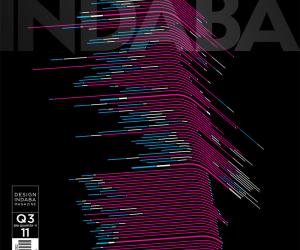First Published in
Massive infrastructural development in an urban landscape destroyed by years of civil war and people with nothing but the belief that tomorrow will be better. That is the bizarre context in which South African artist Michael MacGarry found himself working in Angola.
In the book resulting from his expedition, The Republic of Luanda, MacGarry captures what is happening in “a pretty unique African country”. Referring to his photographic work as a kind of abstract fictionalised product, MacGarry’s images talk to the large-scale developments, mostly through Chinese investment, now dotted around the capital city Luanda. The Republic of Luanda also looks to the social conditions, the culture and the lifestyle of the Angolans in a country where the people are excluded from participating or really sharing in the prosperity effected by foreign powers.
Designed by the Portuguese for a maximum population of 500 000, Luanda is today home to some 6 million people. On paper, Angolans are thought to be rather wealthy, with some of the highest per capita incomes in the world. Chinese investment to the effect of US$4.8 billion has seen rapid infrastructural development in this African country in the past four years. “I visited Angola on two occasions, 18 months apart, and could actually see the 18% GDP growth in that time,” MacGarry says.
But this growth and development appears to be neither sustainable, nor equitable. An environment of distinct disparity and obvious inequality on political, economic and social level, MacGarry sums it up: “They were at war for 30 years, which means there was nothing. Then they found oil there, which means you have a giant ATM on your front lawn. This brings in a massive number of expats, working on infrastructural development. But what they are actually affecting doesn’t make sense. It’s all quite tragic.”
Tragic in the sense that there appears to be no real effort to include the people of Angola in the process of renewal and redevelopment. Tragic because there is this vague sense that the dollars should be trickling down to improve the lives of the people, but there’s also no real resistance to the status quo. The status quo sees economic agreements happening through diplomatic channels, where it then remains. This eliminates the need for trade congresses or private companies. Effectively, the government of Angola has almost no need for the people, because money is generated alternatively.
Though the people have little or no share in the country’s newfound wealth, MacGarry found the Angolans to have an unflinching belief in the notion of a better tomorrow, because things are better than they were a year ago. The capital now boasts new school buildings, new hospitals, new bridges and roads, and new hotels and housing developments. While it is unclear who will be using this, or if the Angolan people will ever be able to afford it, the belief remains that it is better and can only get better still.
This perpetual conviction of the positive possibilities of tomorrow is underpinned by a quote at the beginning of the book: “We always spoke of tomorrow. Yesterday was the dark night of colonialism, today is the suffering of war, but tomorrow will be paradise. The tomorrow that never comes, an eternal today.” The quote is attributed to Pepetela (Artur Carlos Maurício Pestana dos Santos) from A Geração da Utopia (The Utopia Generation).
Describing Luanda as a very transient environment, MacGarry says: “You don’t really get a sense of there being any kind of documentation or any kind of engagement with what is happening. It is a place with a massive amount of historic legacy and problems but there is no real sense of history when you’re there.”
Photographing in this kind of milieu was not an easy task. Considering their Marxist, war-ravaged history, Angolans tend to associate a camera with spying or some other kind of threat. It definitely doesn’t equal journalism, art or culture, he says. In recent years Angolans have also experienced forced land removals. MacGarry says when one arrives in a big sports utility vehicle and takes out a camera the general assumption on the part of ordinary Angolans is that you’re a land surveyor and thus planning their forced removal from the land. “It is an incredibly difficult place to work. Angolans are quite aggressive people and they tend to be very confident in their aggression,” MacGarry adds that there was the occasional threat, punch and chasing, which forced him off a scene.
This aggression, for MacGarry, is also manifested in a kind of institutional dishonesty, which he found difficult to relate to. “On a human level I didn’t really find anything positive. They’re not living in a democracy and they’re not living in a free, equitable market place. It’s really not an easy place to work.”
But The Republic of Luanda is an artist’s book, MacGarry highlights. “I’m not a journalist and this was not a fact-finding mission. It’s not something that didactically says ‘this is Angola’. It’s constructed fiction.”
This fiction is highlighted in almost absurd photographs of Angolans wearing a wetsuit or dressed in a Father Christmas outfit. “They are performing capitalism but they are not a capitalist country, the people are all just actors in this very strange context. And none of this is in an empowered sense,” MacGarry notes.
Angolans might be politically and economically marginalised but their unique brand of culture is alive, well and mostly tied into soccer, says MacGarry. The Luanda Triennial and big music concerts, with the likes of R Kelly and George Benson, are some of the events found on the creative calendar of Luanda. The music scene is pumping, fashion shows are happening all over the place and soccer dominates everywhere: “There’s a lot of culture around football and there’s a particular kind of music there, like an incredibly fast kind of spoken rap music. It’s the Portuguese equivalent of kwaito.”
Youth culture in Luanda speaks for itself. MacGarry says that in aesthetic and sentiment, the Angolan youth are closer to Portuguese kids and Brazilian kids than to African kids. “They have the same bleach-blonde Mohawk hair and skinny jeans that Brazilian and Portuguese kids wear. Kids elsewhere in Africa don’t look like that.”
But, MacGarry adds, their hybrid identity is uniquely Angolan: “It’s all young and new – like South Africa was 10 years ago.” For Angola, the imagined paradise of tomorrow is what makes the grim reality of today bearable.

